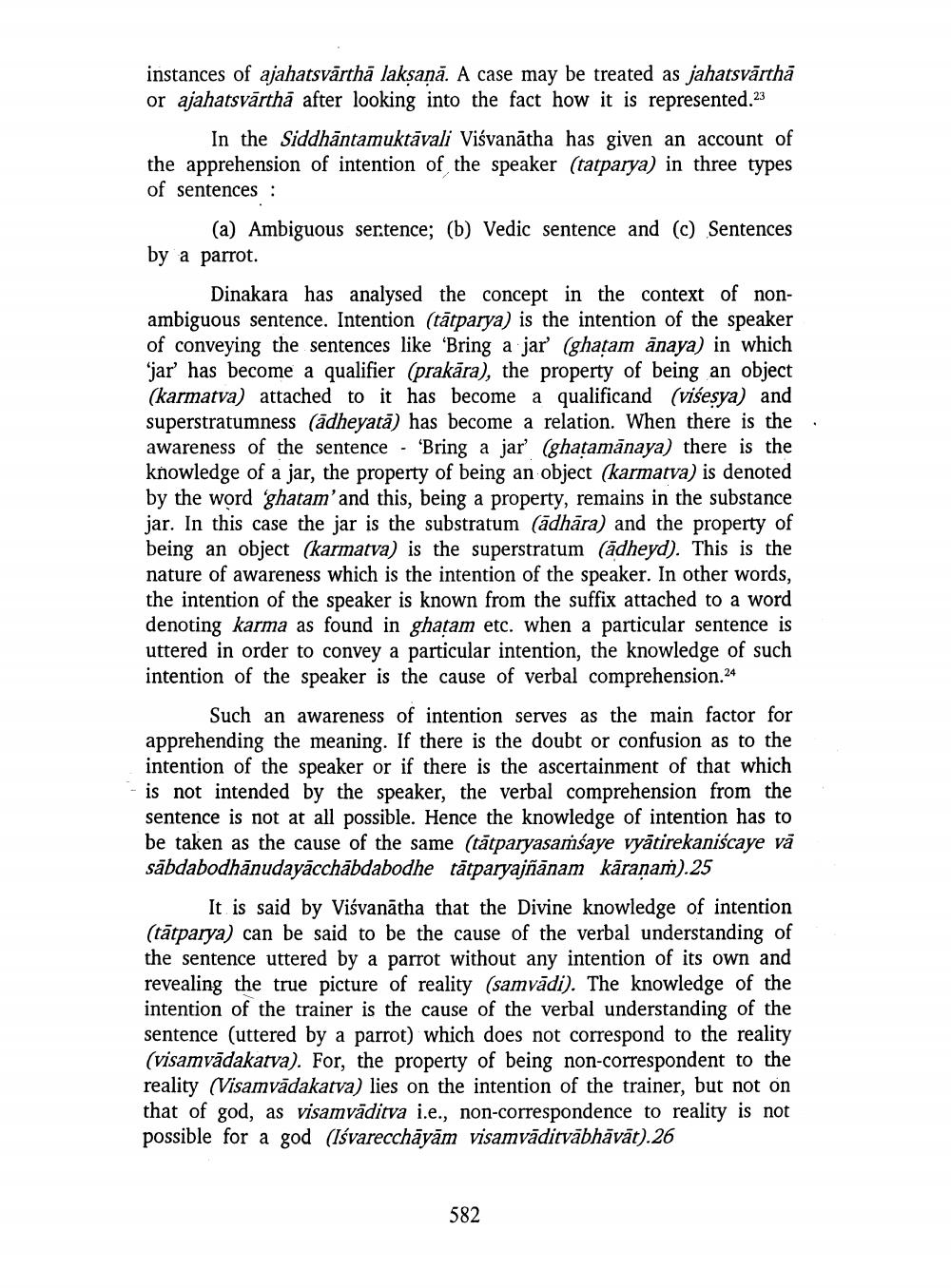________________
instances of ajahatsvārthā laksana. A case may be treated as jahatsvārthā or ajahatsvārthă after looking into the fact how it is represented.23
In the Siddhāntamuktavali Viśvanātha has given an account of the apprehension of intention of the speaker (tatparya) in three types of sentences :
(a) Ambiguous sertence; (b) Vedic sentence and (c) Sentences by a parrot.
Dinakara has analysed the concept in the context of nonambiguous sentence. Intention (tātparya) is the intention of the speaker of conveying the sentences like 'Bring a jar (ghatam anaya) in which jar' has become a qualifier (prakāra), the property of being an object (karmatva) attached to it has become a qualificand (višesya) and superstratumness (adheyatā) has become a relation. When there is the awareness of the sentence - 'Bring a jar (ghatamānaya) there is the knowledge of a jar, the property of being an object (karmatva) is denoted by the word ghatam'and this, being a property, remains in the substance jar. In this case the jar is the substratum (ādhāra) and the property of being an object (karmatva) is the superstratum (ādheyd). This is the nature of awareness which is the intention of the speaker. In other words, the intention of the speaker is known from the suffix attached to a word denoting karma as found in ghatam etc. when a particular sentence is uttered in order to convey a particular intention, the knowledge of such intention of the speaker is the cause of verbal comprehension.24
Such an awareness of intention serves as the main factor for apprehending the meaning. If there is the doubt or confusion as to the intention of the speaker or if there is the ascertainment of that which is not intended by the speaker, the verbal comprehension from the sentence is not at all possible. Hence the knowledge of intention has to be taken as the cause of the same (tātparyasamsaye vyātirekaniscaye vă sābdabodhānudayācchābdabodhe tātparyajñānam kāranam).25
It is said by Viśvanātha that the Divine knowledge of intention (tātparya) can be said to be the cause of the verbal understanding of the sentence uttered by a parrot without any intention of its own and revealing the true picture of reality (samvādi). The knowledge of the intention of the trainer is the cause of the verbal understanding of the sentence (uttered by a parrot) which does not correspond to the reality (visamvādakatva). For, the property of being non-correspondent to the reality (Visamvādakatva) lies on the intention of the trainer, but not on that of god, as visamvaditva i.e., non-correspondence to reality is not possible for a god (Išvarecchāyām visamvāditvābhāvāt).26
582




